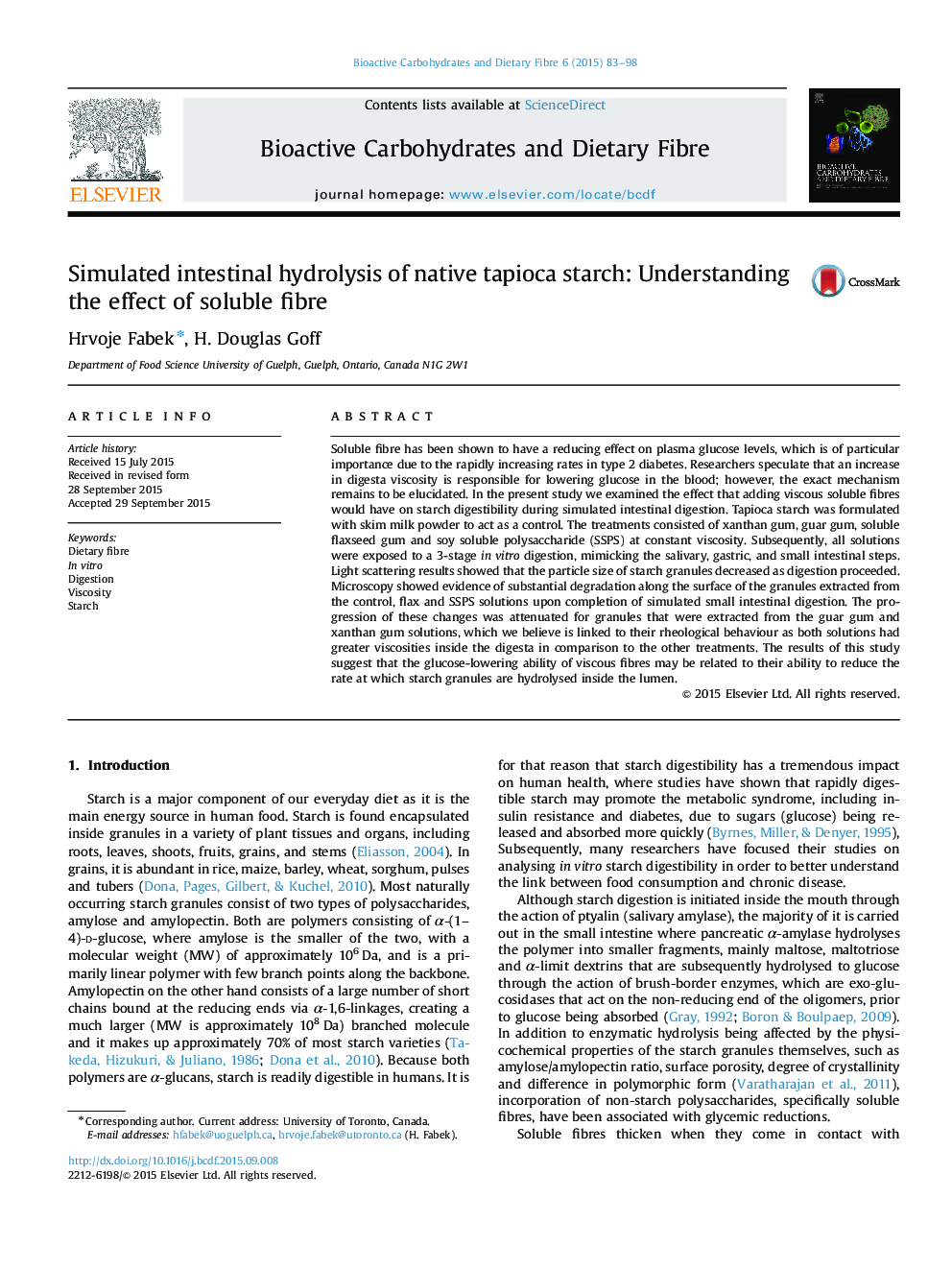| Article ID | Journal | Published Year | Pages | File Type |
|---|---|---|---|---|
| 1412981 | Bioactive Carbohydrates and Dietary Fibre | 2015 | 16 Pages |
•Xanthan gum and guar gum increased digesta viscosity of starch solutions.•Simulated digestion led to changes in starch surface topography and particle size.•Xanthan gum and guar gum were the most effective at attenuating starch hydrolysis.•Soluble fibres increase starch gelatinization, which may impact digestibility.•Digesta viscosity is inversely related to amylolysis of native starch granules.
Soluble fibre has been shown to have a reducing effect on plasma glucose levels, which is of particular importance due to the rapidly increasing rates in type 2 diabetes. Researchers speculate that an increase in digesta viscosity is responsible for lowering glucose in the blood; however, the exact mechanism remains to be elucidated. In the present study we examined the effect that adding viscous soluble fibres would have on starch digestibility during simulated intestinal digestion. Tapioca starch was formulated with skim milk powder to act as a control. The treatments consisted of xanthan gum, guar gum, soluble flaxseed gum and soy soluble polysaccharide (SSPS) at constant viscosity. Subsequently, all solutions were exposed to a 3-stage in vitro digestion, mimicking the salivary, gastric, and small intestinal steps. Light scattering results showed that the particle size of starch granules decreased as digestion proceeded. Microscopy showed evidence of substantial degradation along the surface of the granules extracted from the control, flax and SSPS solutions upon completion of simulated small intestinal digestion. The progression of these changes was attenuated for granules that were extracted from the guar gum and xanthan gum solutions, which we believe is linked to their rheological behaviour as both solutions had greater viscosities inside the digesta in comparison to the other treatments. The results of this study suggest that the glucose-lowering ability of viscous fibres may be related to their ability to reduce the rate at which starch granules are hydrolysed inside the lumen.
Graphical abstractScanning electron micrographs of tapioca starch granules isolated from the digesta of different fibre-fortified treatments following simulated 3-stage (salivary, gastric, small intestinal) digestion, where each treatment varied in viscosity as a result of the fibre present in the digest, with viscosity decreasing in the order of: XG (most viscous)>GG>SFG>SSPS>C (least viscous). SSPS=Soy Soluble Polysaccharide; SFG=Soluble Flaxseed Gum; GG=Guar Gum; XG=Xanthan Gum; C=Control solution with no fibre added.Figure optionsDownload full-size imageDownload as PowerPoint slide
